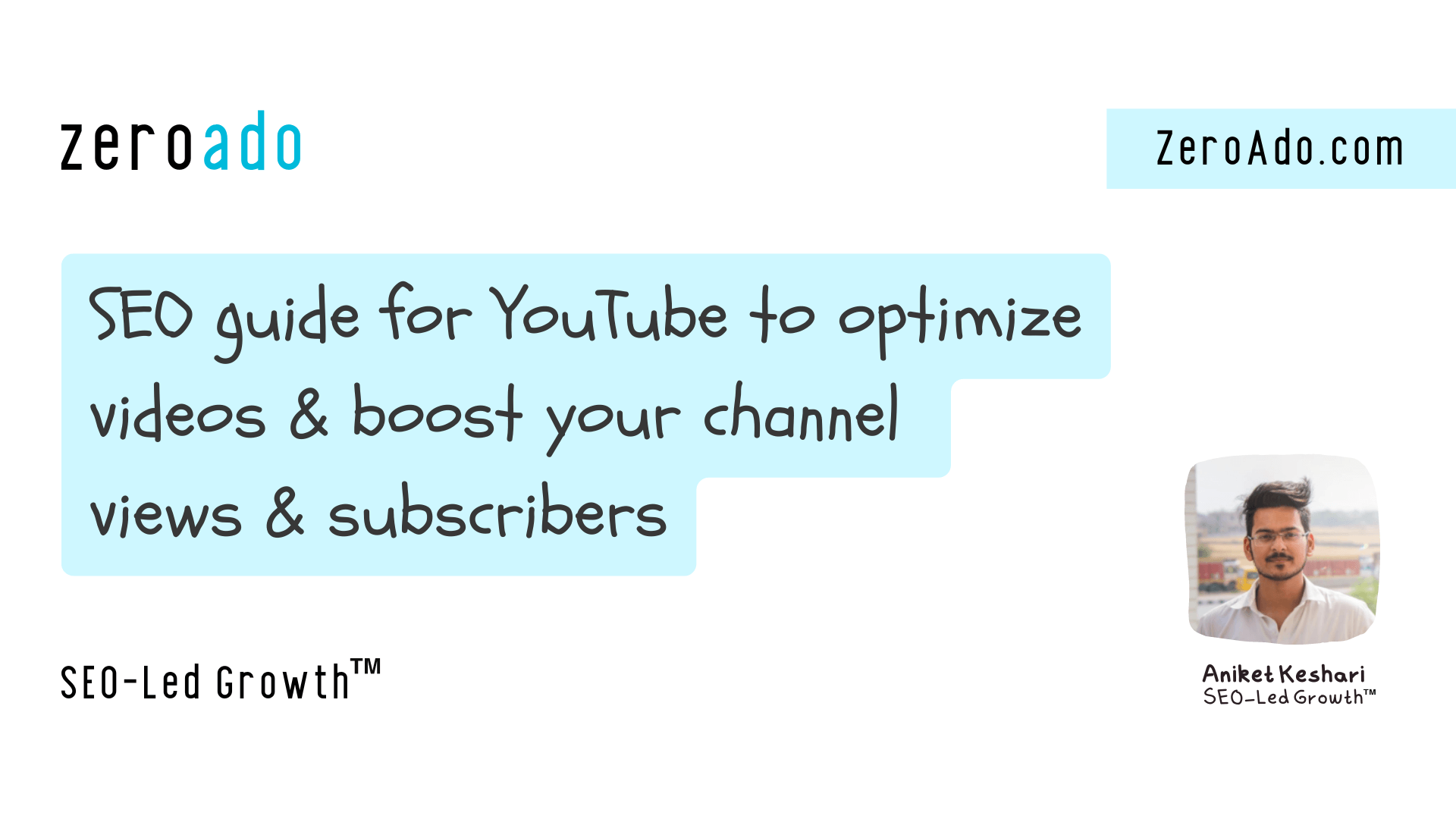YouTube, the second most popular social network globally in terms of user numbers, is a platform full of opportunities for businesses and content creators. But with millions of videos uploaded daily, how do you make yours stand out?
You probably have this question in your head. Why do some YouTube channels become very popular while others struggle to gain traction?
I know you’re curious about how to make your videos more discoverable and engaging for a broader audience. Aren’t you?
Well, the secret lies in understanding and implementing good YouTube SEO strategies.
- What is YouTube SEO?
- How does YouTube SEO work?
- 12 Killer YouTube SEO hacks to supercharge your channel’s growth
- Keyword research
- Craft engaging video title
- Write descriptive video descriptions
- Edit video file name
- Create custom thumbnails
- Use YouTube cards and end screens
- Categorize your video for better reach
- Create a playlist for your videos
- Engage with your audience
- Promote your videos and channel
- Optimize your YouTube channel page
- Host live Q&A sessions
- Analyze and monitor your YouTube analytics
- Ready to get more traction with better YouTube SEO?
- Frequently Asked Questions on YouTube SEO
What is YouTube SEO?
YouTube SEO (Search Engine Optimization) is the process of optimizing your videos, channels, and playlists to improve their visibility and ranking on YouTube’s search results. It involves various techniques and strategies to make your content more discoverable to users searching for specific topics or keywords.
How does YouTube SEO work?
YouTube SEO works by optimizing various elements of your video content to improve its visibility and ranking on YouTube’s search results. It involves using targeted keywords, optimizing your content with SEO copywriting, creating engaging titles and descriptions, and encouraging viewer interaction.
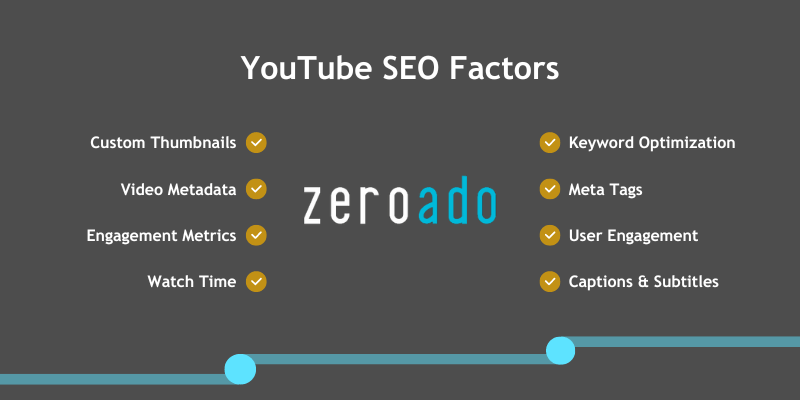
Some key factors of YouTube SEO
SEO for YouTube depends on various factors, some of them are
Keywords and tags
Use relevant keywords in your titles, descriptions, and tags to help YouTube understand what your content is about.
Video metadata
Crafting informative titles and descriptions that accurately represent your content and include important keywords.
Engagement metrics
Encouraging likes, comments, shares, and subscriptions, as YouTube prioritizes content with high user engagement.
Watch time and retention
Creating content that keeps viewers watching longer, as YouTube values videos with higher watch times.
Thumbnails and visual appeal:
Designing attractive thumbnails that encourage clicks and accurately reflect your video’s content.
Captions and subtitles
Adding captions and subtitles will make your videos more accessible and improve searchability.
Playlists and organization
Grouping related videos into playlists to increase watch time and make it easier for viewers to find related content.
But let me tell you a secret, YouTube isn’t the only search engine you should be optimizing for. YouTube videos rank in search engines like Google too!
When you optimize your YouTube videos, you’re not just increasing their visibility on YouTube but also improving their chances of appearing in Google search results.
Google often includes YouTube videos in its search results, especially for queries where video content is relevant and helpful. This means that effective YouTube SEO can help your videos reach an even larger audience through Google searches.
For example, imagine you have a cooking channel on YouTube and you upload a video titled “How to Make the Perfect Chocolate Cake.” By optimizing your video with the right keywords, such as “chocolate cake recipe” and “how to bake a chocolate cake,” your video stands a good chance of appearing in Google search results when someone searches for these terms.
If you search for “how to make the perfect chocolate cake” on Google, you might find a YouTube video that could appear in Google’s search results for this query. Here’s a snapshot showing how a well-optimized YouTube video appears in Google’s search results for this keyword.
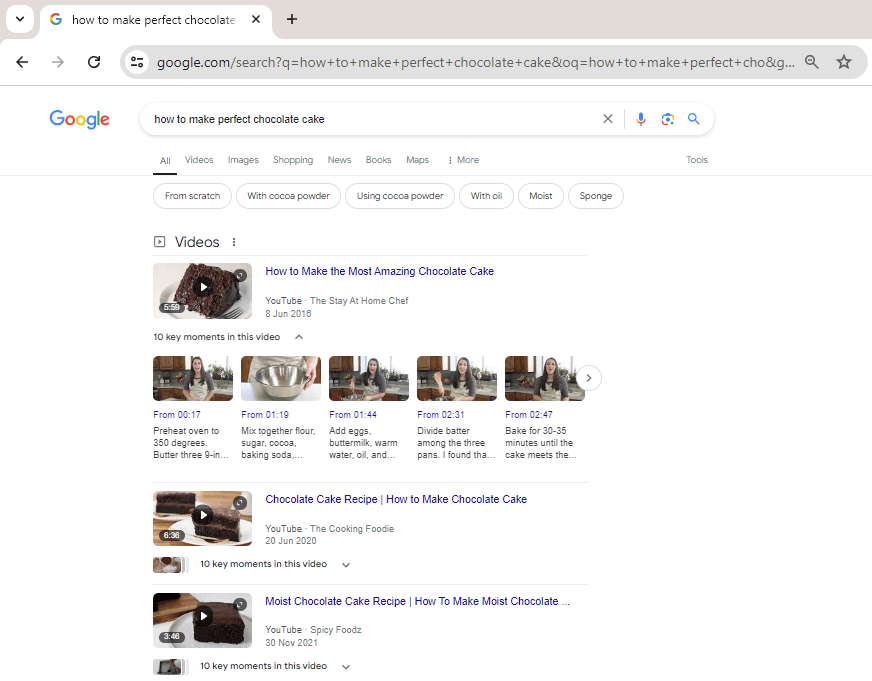
By optimizing your video with relevant keywords like “perfect chocolate cake recipe” and “how to make chocolate cake,” your video can appear in these search results, drawing viewers who are searching for specific baking tips. This not only boosts your video’s visibility on YouTube but also attracts potential viewers from Google, increasing your reach and engagement.
12 Killer YouTube SEO hacks to supercharge your channel’s growth
YouTube SEO is not a cakewalk, let me put it that way. Even if you follow all the guidelines, the decision to rank your video highly depends on the YouTube algorithms. This algorithm takes various factors such as viewer engagement (likes, comments), watch time (duration), and relevance (keywords).
Moreover, user navigation and interaction with your video play a significant role in determining its ranking. In simple terms, the more viewers watch and engage with your video, the more favorably YouTube will rank it, increasing the chances of your video appearing at the top.
Before diving into YouTube SEO strategies, let me clarify something. Since you’re looking for YouTube SEO tips, I assume you already have a channel. And have established your niche (the category or topic for which you upload videos).
If you haven’t set up a channel or defined your niche yet, it’s crucial to do so first. Creating a well-defined channel and niche will help you target your audience more effectively and improve the impact of your SEO efforts.
Now, let’s look at SEO strategies for YouTube that can help you get your videos to the top of search results.
Keyword research
Keyword research is one of the most important parts of YouTube SEO. It helps YouTube understand the content of your video, categorize it accurately, and match it with users’ search queries. By targeting the right keywords, you can improve your video’s visibility, attract more views, and grow your audience effectively.
Now the question comes, how do you conduct effective keyword research for YouTube? Here are the steps to guide you through the process.
Think about the topic
When thinking of a topic, brainstorm about what interests your audience and what topics are relevant to your niche. Consider their needs, challenges, and preferences.
For example, if your audience consists of small business owners, they might be interested in cost-effective marketing strategies, tips for boosting productivity, or success stories from other entrepreneurs.
By aligning your content with what your audience cares about, you can create engaging and valuable material that resonates with them and keeps them coming back for more.
Use YouTube’s search suggestions
After deciding on your topic, go to YouTube and start typing keywords related to it into the search bar to see what suggestions come up. From here, you’ll get a bunch of keywords related to what you typed in.
For example, if I searched for “home workout,” I would find a wide range of keywords.
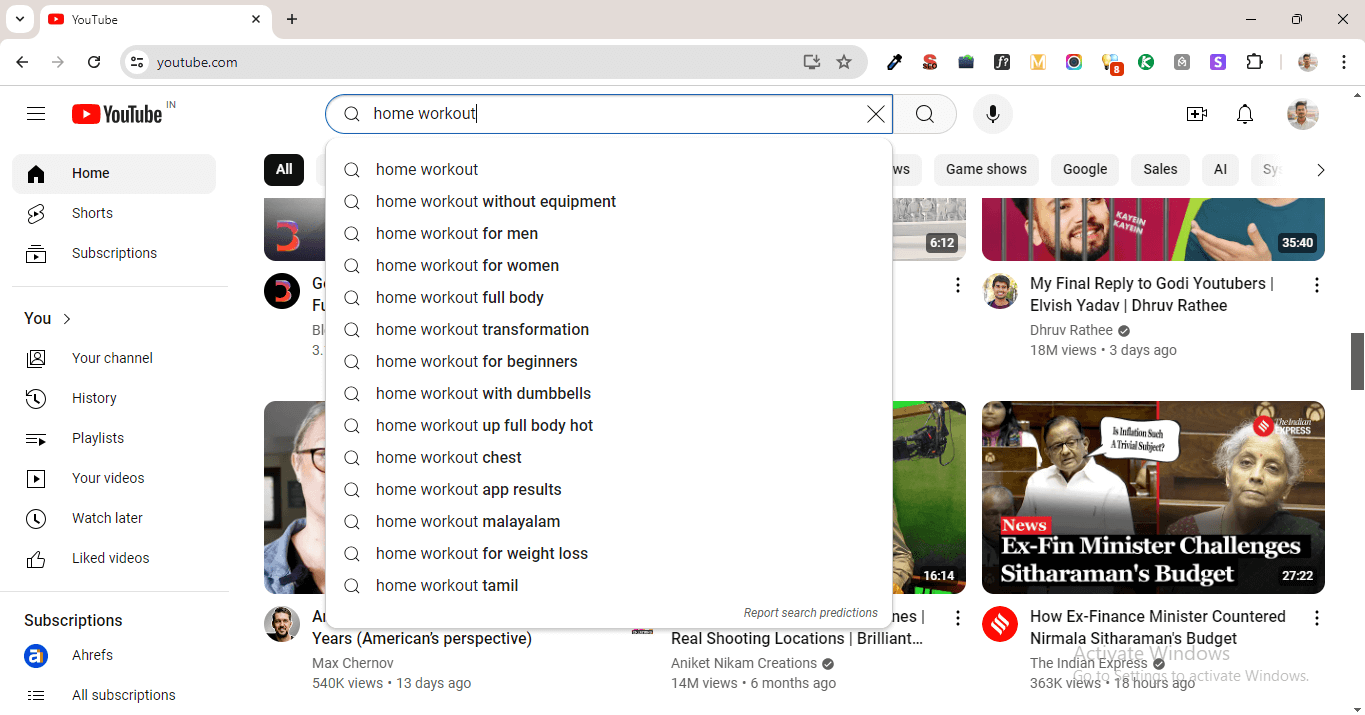
You can see keywords like “home workout for beginners,” “home workout without equipment,” and “home workout full body” appearing in search results. These suggestions can give you a bunch of related keywords to help refine your content.
Analyze your competitors
Visit some of the most popular videos in your niche and see what keywords they are targeting. You can copy the same keywords that the video is optimized for. This increases the chances of your videos getting more traction.
To implement this step, go to YouTube, search your niche, and click on the filter.
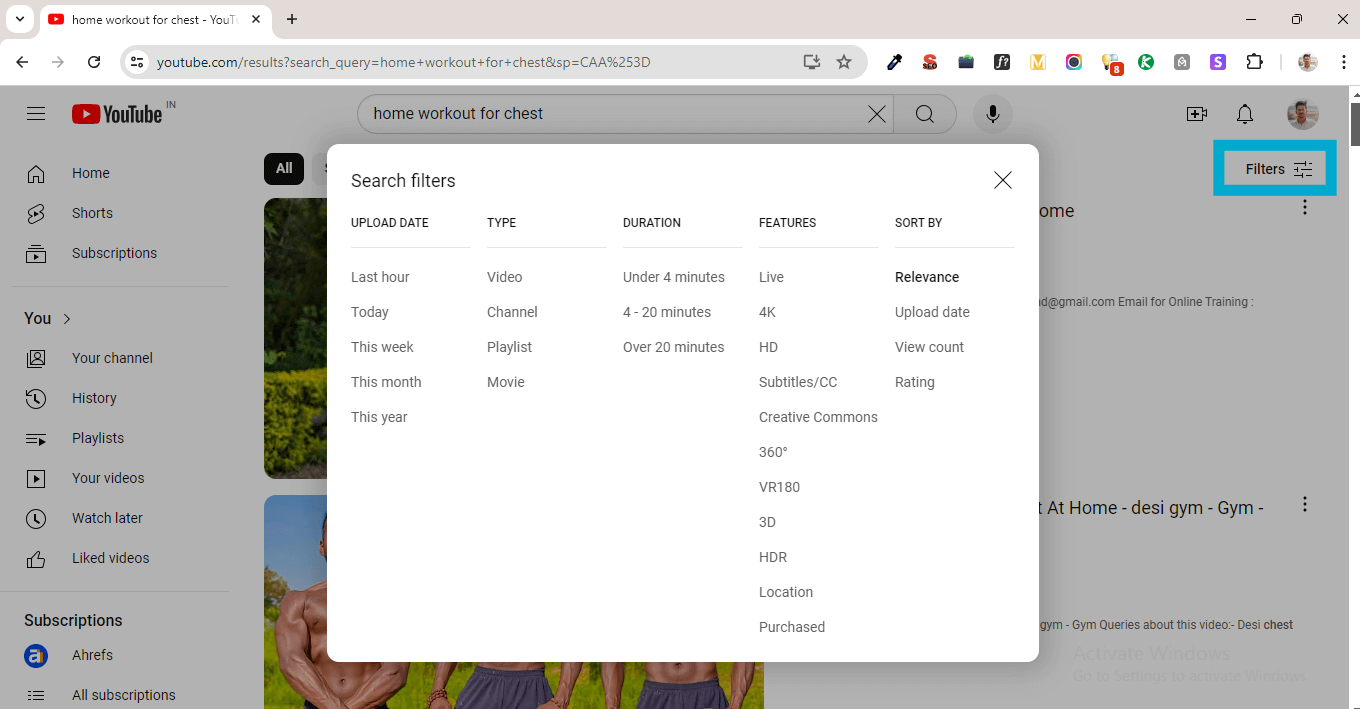
This will give you various options to refine your search, such as sorting by upload date, view count, rating, or duration. You can also select “videos” to focus on specific content. If you want to take a closer look, visit the creators’ channels and sort by their most popular videos.
Additionally, you can explore “channels” to find creators in your niche or “playlists” to discover grouped content.
The above methods for finding keywords are cost-effective and ideal if you’re running short on budget. Now, if you’re looking to invest in more advanced options, tools like TubeBuddy, Ahrefs, Semrush, VidIQ, and Google’s Keyword Planner can help you find relevant keywords and provide data on their search volume and competition.
The best part of these tools is that they offer in-depth insights and analytics, allowing you to make data-driven decisions and optimize your content strategy effectively.
I personally use Ahrefs because it provides powerful keyword research capabilities, detailed competitive analysis, and actionable insights that help me optimize my SEO strategy and drive better results.
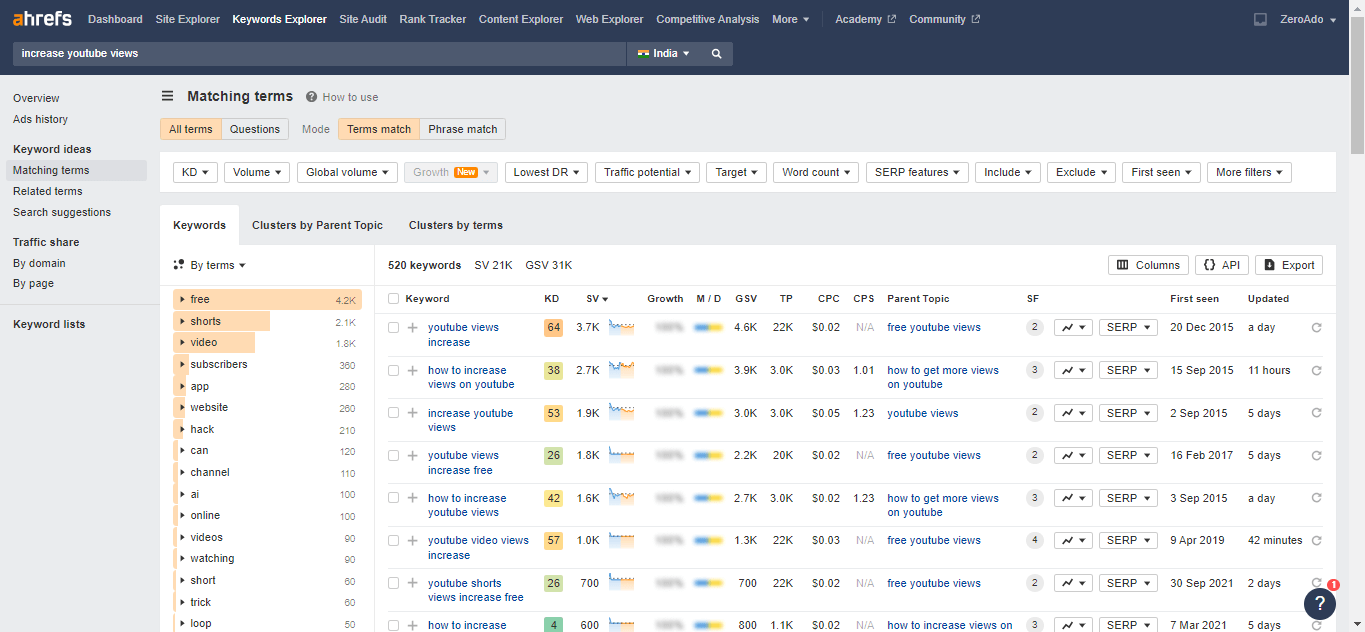
Craft engaging video title
Once the keyword research has been completed, it’s time to embed those keywords into your video title. A well-crafted title not only captures attention but also improves your video’s visibility in search results.
Incorporate your primary keywords naturally, and ensure the title is both compelling and relevant to the content. Try to keep titles within 70 characters (including spaces), as YouTube has a 100-character limit for titles, but anything longer than 70 will be truncated in most search results.
Use simple language instead of technical jargon, and choose keywords that reflect what users commonly search for. This approach helps you write catchy headlines / titles, attracts viewers and boosts your video’s chances of ranking higher on YouTube and search engines.
For example, in the ZeroAdo video, the content discusses “How to Use Chicago Style Guide”. Therefore, the main keyword for this video is “Chicago Style Guide,” and it is included in the title.
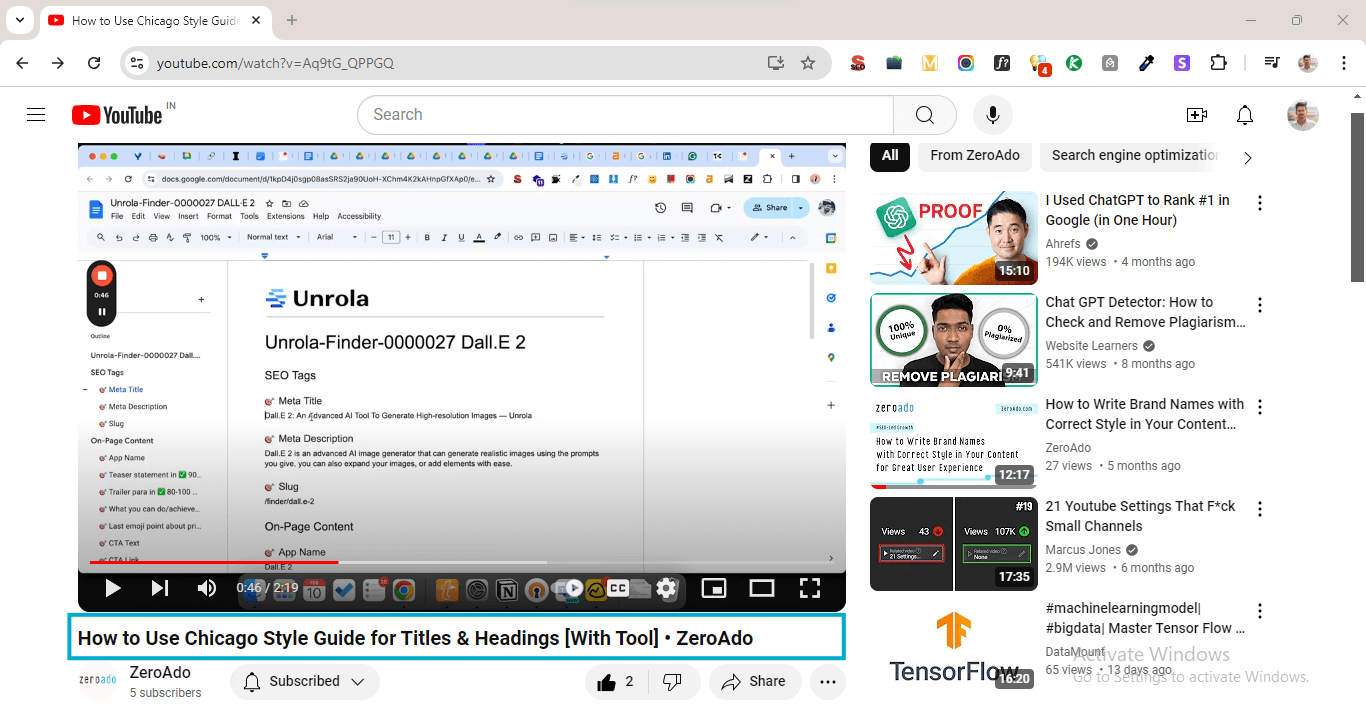
Write descriptive video descriptions
Another crucial part of YouTube SEO is the video description. With a character limit of 5,000, the description provides YouTube algorithms and search engines with information about the content of your video.
For example, here PropertyCloud writes an excellent video description by incorporating relevant keywords such as “Godrej Woodscape,” “Godrej Woodscape Budigere Cross,” “Godrej Woodscape Bangalore,” “Godrej Woodscape Whitefield,” and “Godrej Budigere Cross Bangalore.”
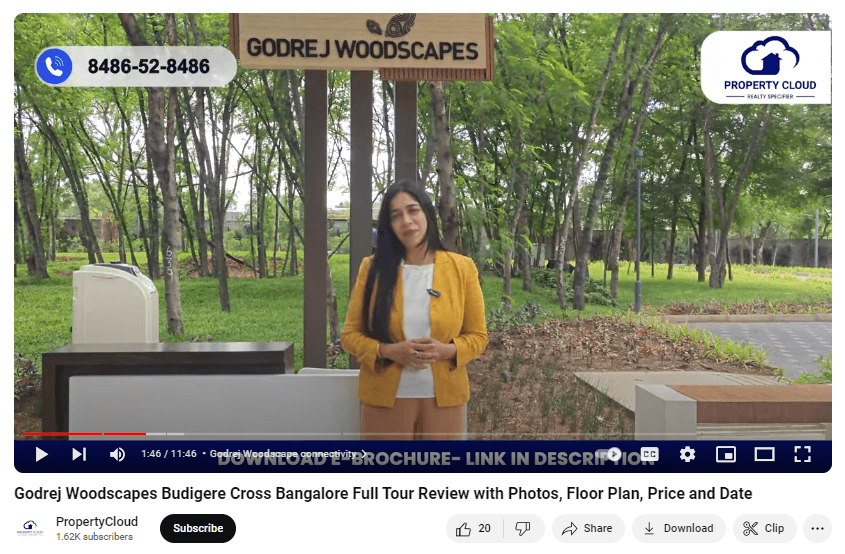
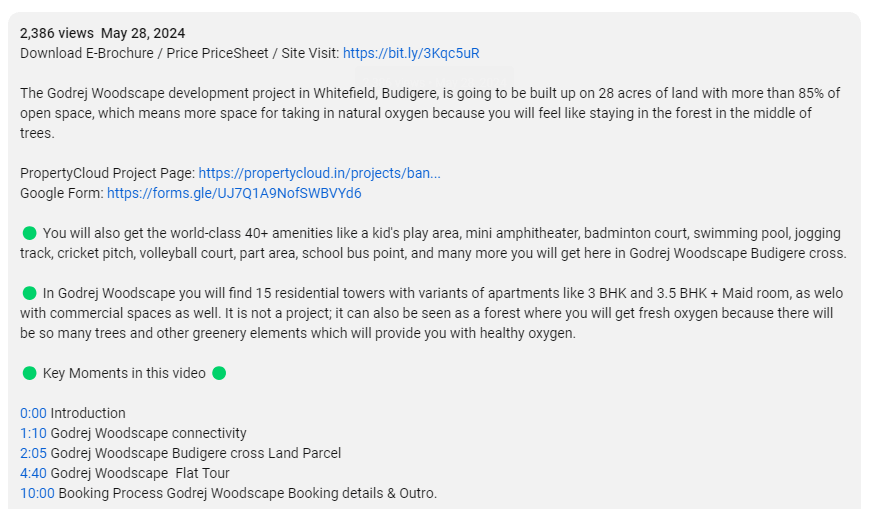
As you can see, along with a good introduction featuring keywords, they have included “key moments in this video,” followed by time stamps. These timestamps, known as “video chapters,” basically break up a YouTube video into sections, each with its own preview.
They provide helpful context for each part of the video and allow audiences to easily skip to or re-watch different segments during their viewing experience.
Key tips for writing a standout video description
Let’s look at a few points for writing YouTube video descriptions from an SEO perspective.
Include keywords early
Place your main keyword within the first 25 words, ideally in the first two sentences.
Length and frequency
Aim for a description that is at least 250 words long, incorporating your keywords 2-4 times throughout the text.
Cross-promote
Use the description to promote other platforms by including links to Twitter, Facebook, your website, etc. Shorten URLs using tools like Bitly, or Short URL, if you have an account. This helps you stay within character limits and maximize the use of space in your description.
Add hashtags
To improve discoverability, include 3-5 relevant hashtags related to your video’s topics or category at the end of the description. This helps categorize your video and makes it easier for viewers interested in those topics to find your content.
The overall purpose of writing a well-crafted description is to help search engines understand your video’s topic, which improves its visibility and relevance in search results.
Edit video file name
Did you know that YouTube SEO starts even before you upload your video? Instead of uploading your video with random names full of letters and digits (e.g., VID20240126691.mp4), edit your video file name with relevant keywords (e.g., how-to-do-seo-for-youtube-videos.mp4).
To do this, follow these steps:
- Open file manager: Locate your video file on your computer.
- Right-click on the file: Select “Properties” from the context menu.
- Go to the details tab: In the Properties window, click on the “Details” tab.
- Edit the fields:
- Title: Update this field with your relevant keywords.
- Subtitle: Optionally, add keywords or a brief description.
- Rating: Ensure this is appropriately set if relevant.
- Tags: Add relevant tags related to your video’s content.
- Comments: Optionally, include additional notes or descriptions.
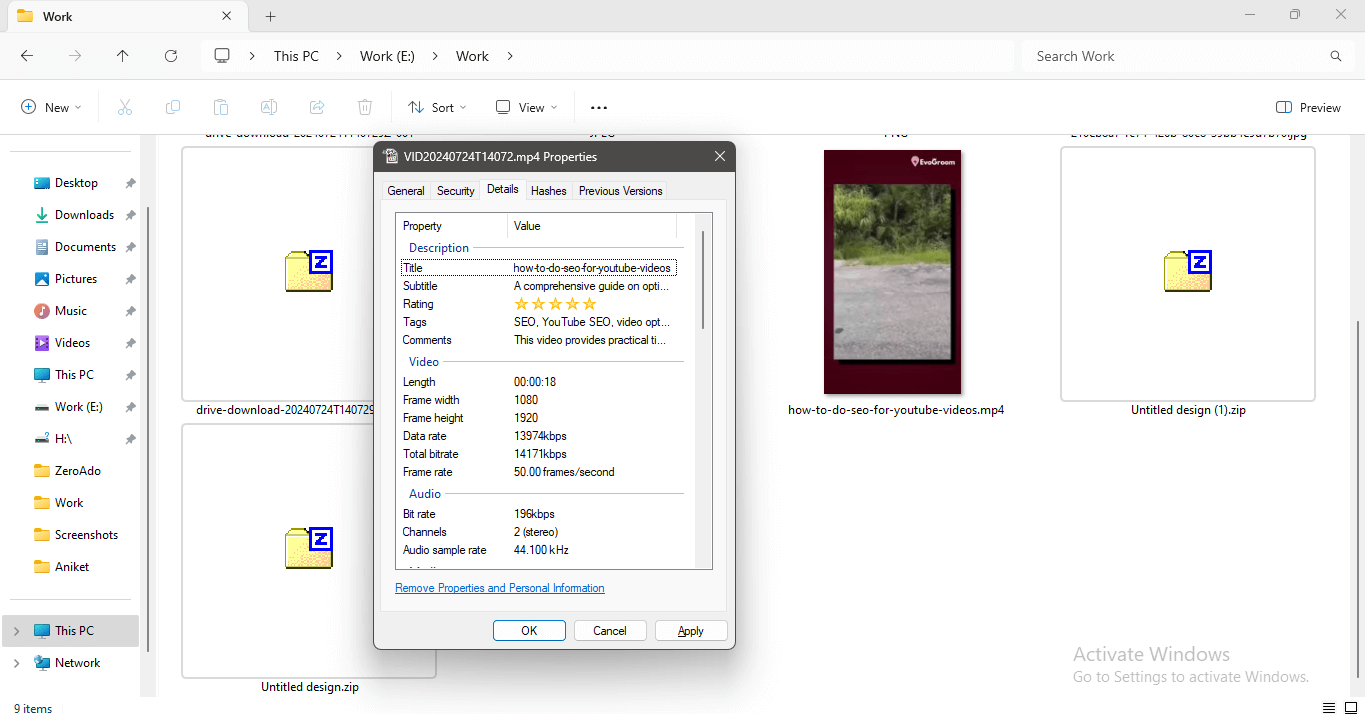
Create custom thumbnails
Most of the time, I choose something to watch on YouTube based on the preview image. Do you do the same? If so, then you’re already familiar with how important the right thumbnail can be.
A thumbnail is the cover photo that represents your video on YouTube. It’s the first thing viewers see when browsing through search results or recommended videos, making it a critical factor in attracting clicks and views. A well-designed thumbnail can make or break someone’s decision to click / watch your video or scroll past it.
So choose your thumbnails wisely.
For example, Nike uses sports personalities in their thumbnails to deliver a dynamic and energetic message to their users.
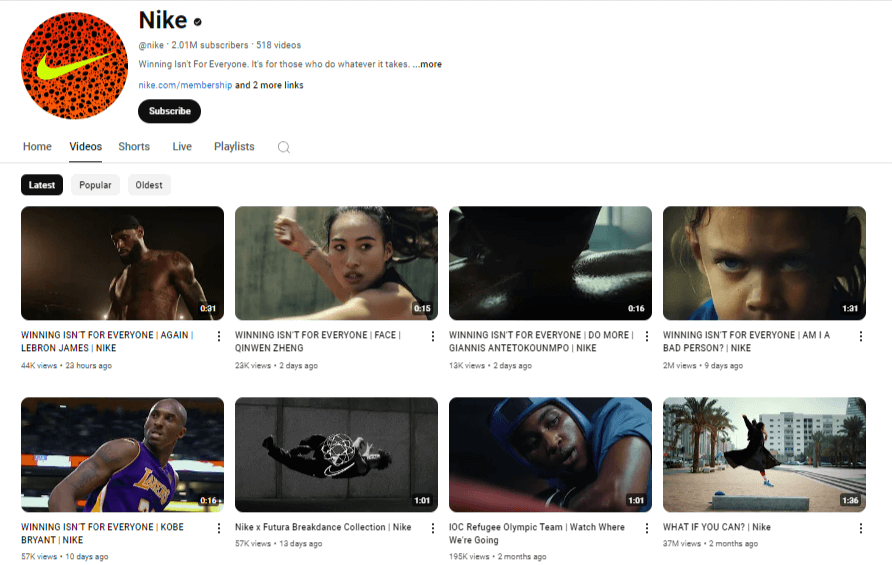
Similarly, Samsung uses short and effective copy along with striking visuals of their latest gadgets in their thumbnails to highlight innovation and technology.
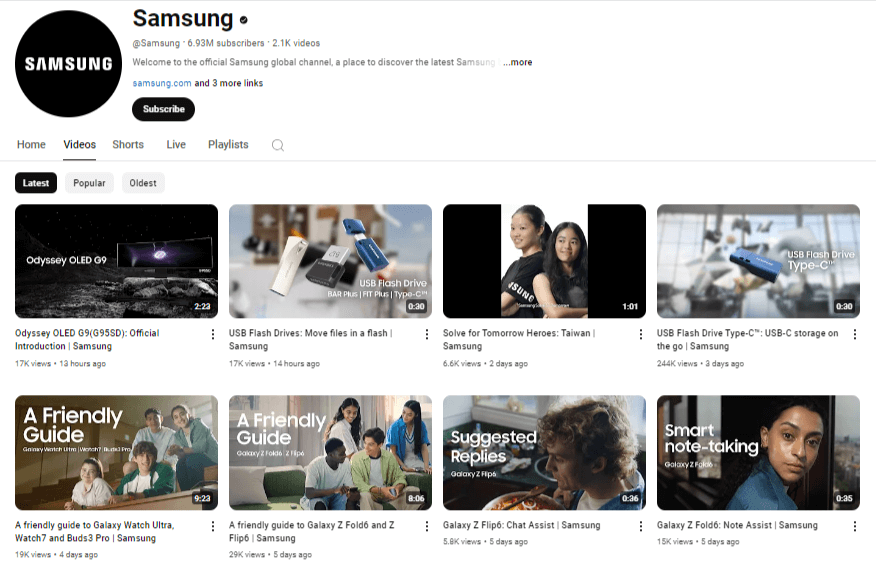
To create an effective thumbnail, consider the following tips:
- Ensure your thumbnail is clear, sharp, and visually appealing. Avoid blurry or pixelated images.
- Add a brief, catchy text overlay that summarizes the video content. Use large, readable fonts.
- Make your thumbnail stand out by using colors that contrast well with each other. This helps catch the viewer’s eye.
- Make sure the thumbnail accurately represents the content of your video. Misleading thumbnails can frustrate viewers and harm your channel’s reputation.
- Thumbnails with faces often perform better because they create a personal connection with viewers.
- Develop a consistent style for your thumbnails to help build your brand identity.
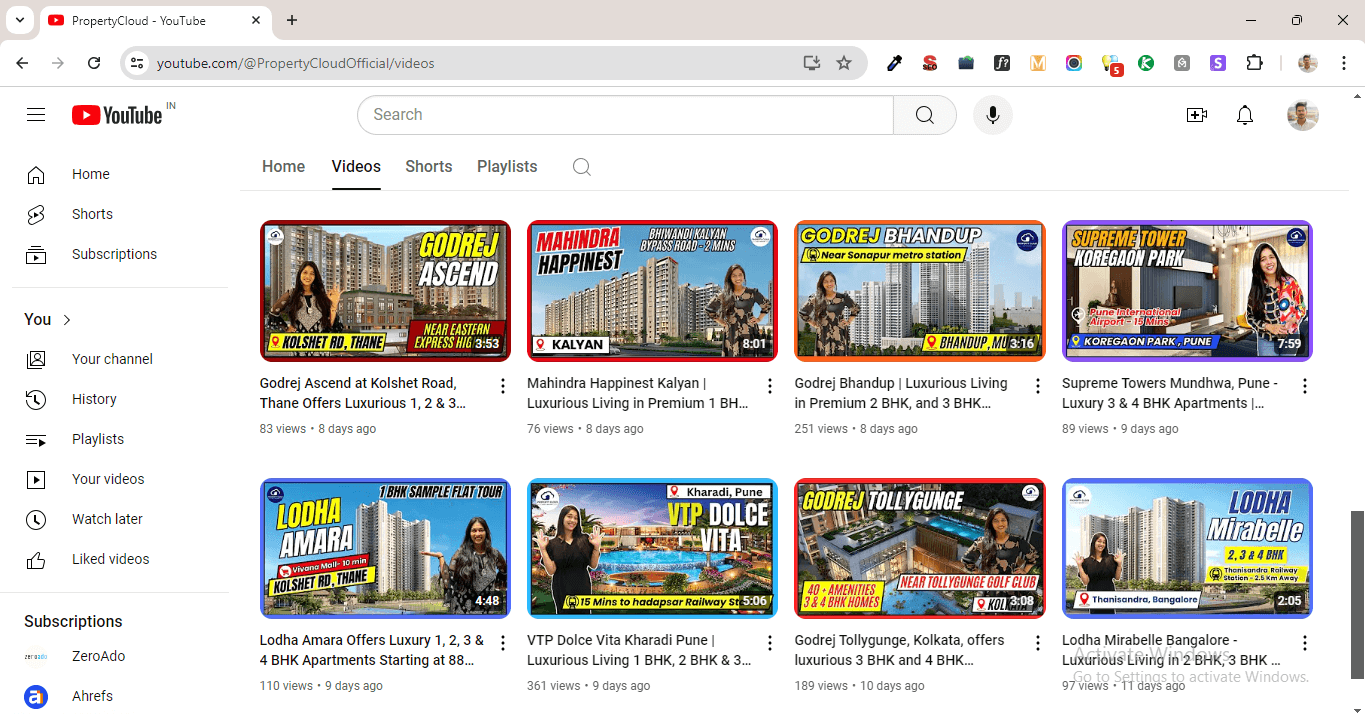
Use YouTube cards and end screens
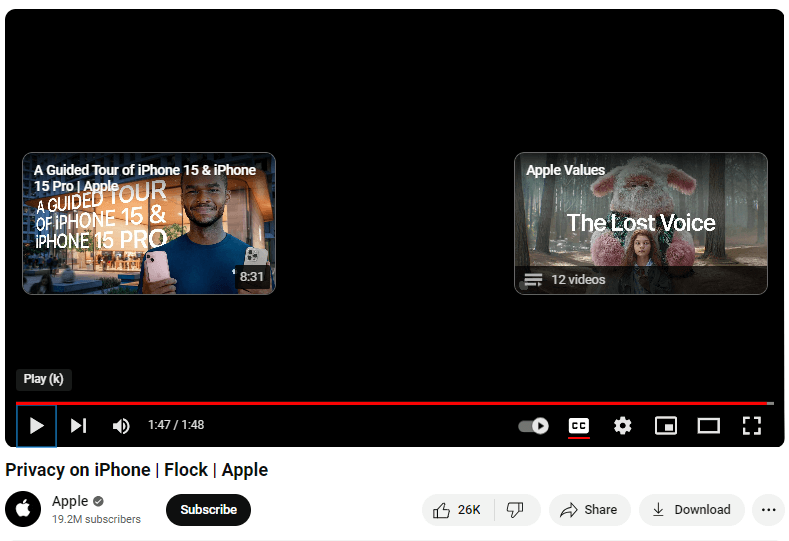
Have you ever noticed videos like this that appear towards the end of a YouTube video? These are called YouTube cards.
YouTube cards are preformatted notifications that you can set up to promote your brand videos, playlists, websites, merchandise, or even encourage viewers to participate in a poll. They are an excellent way to keep your audience engaged and guide them towards additional content you’ve created.
Note: You can add up to 5 cards per video.
Categorize your video for better reach
The more you tell YouTube about your content, the better it can do at recommending your video to the right audience. Every day, there are millions of videos uploaded to YouTube, so make sure your video is correctly categorized to stand out.

Avoid choosing a category simply because it’s popular. Instead, select a category that accurately reflects your video’s content.
As highlighted by the Reddit user in the above post, choosing the right category ensures your video reaches its intended audience and can positively impact your viewership. Misclassifying your video may result in decreased engagement and visibility, which can affect your channel’s performance in the long run.
Create a playlist for your videos
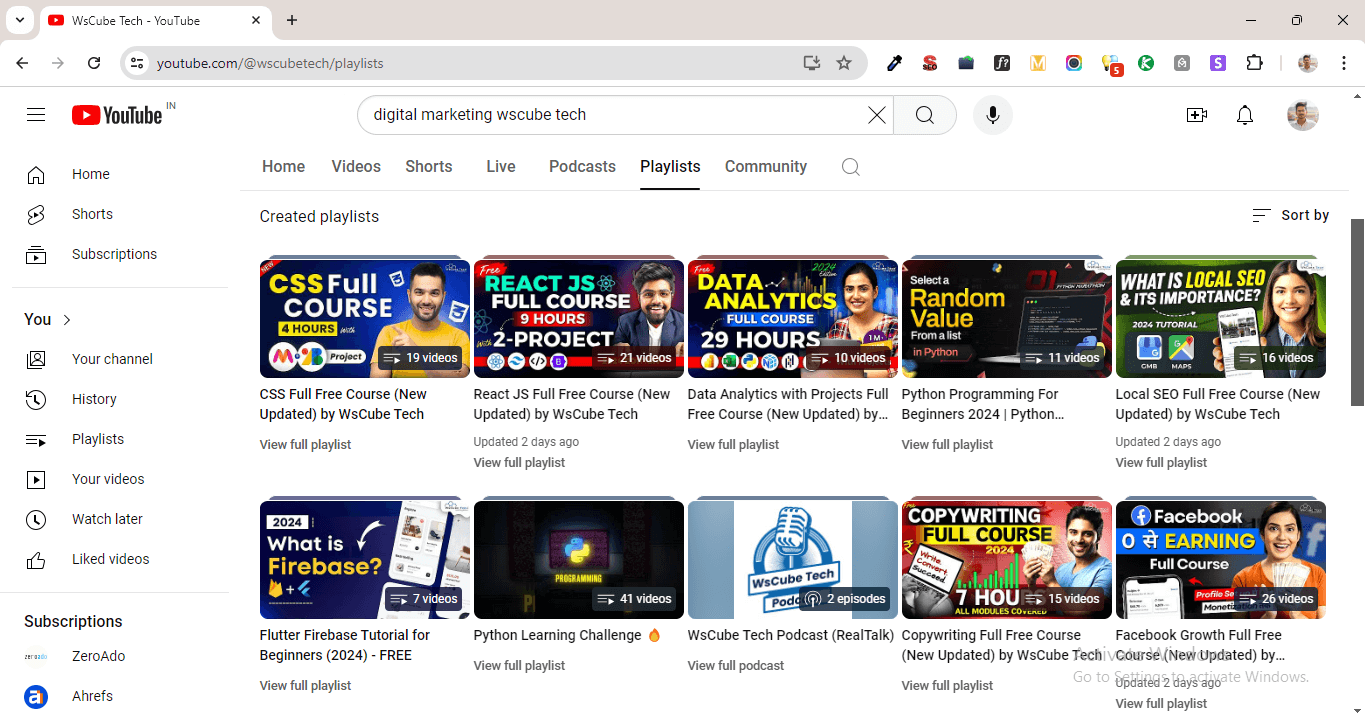
Playlists are an excellent way to organize your content and improve your YouTube presence. Approximately 37% of millennials engage with YouTube daily, so the easier you make it for them to binge-watch your videos, the better it is for your YouTube SEO.
Playlists automatically queue and play every video within them, which can lead to thousands of additional views each month. By grouping related videos together, you help YouTube understand the context of your content and encourage viewers to watch more of your videos. This not only increases your view count but also improves your video rankings and overall channel performance.
You might have questions about which videos to include in a playlist and which don’t. I suggest starting by figuring out the main theme or topic of the playlist.
For example, if your playlist is about “healthy recipes,” choose videos that focus on various healthy meals or cooking tips. Make sure the videos are relevant to the theme and are of good quality. Think about what your viewers are interested in and what they might find useful.
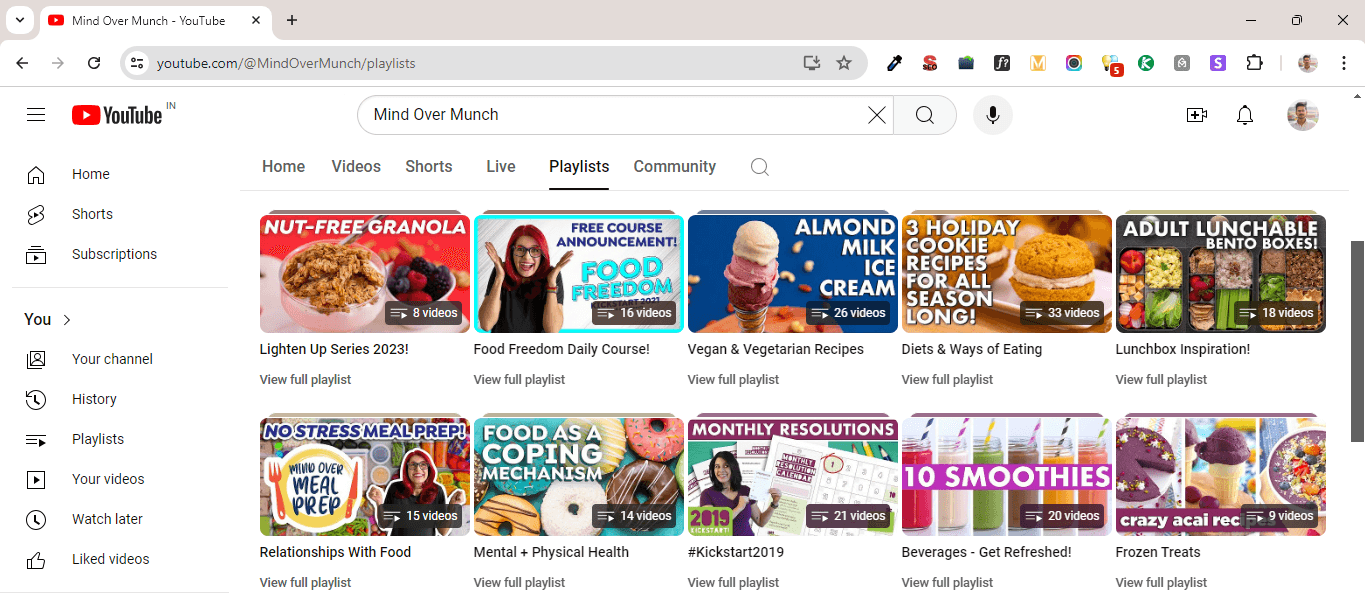
If your playlist is meant to teach something, like “beginner yoga,” arrange the videos in a logical order, starting with the basics and moving to more advanced topics. You can also mix different types of videos, like how-to guides and tips, to keep things interesting.
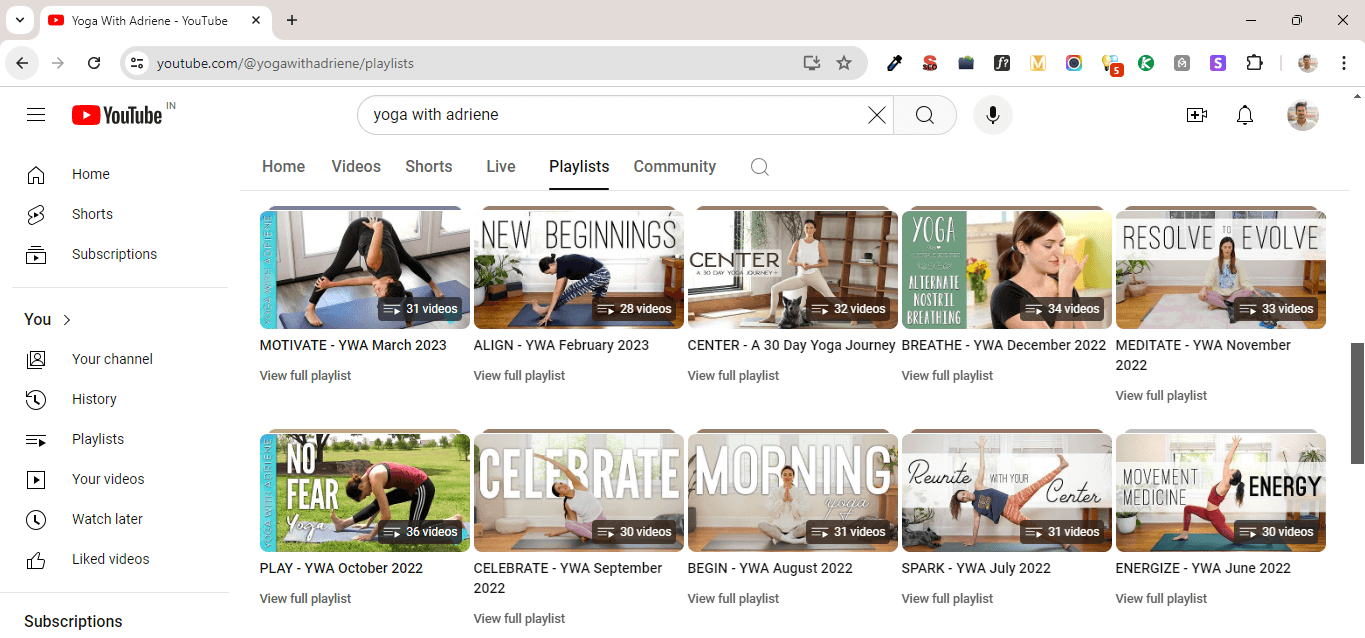
Avoid including duplicate content, and regularly check how your playlist is performing by looking at views and feedback. This way, you can keep your playlist engaging and useful for your audience.
Here’s a guide on how to create a playlist for your videos using YouTube Studio.
Engage with your audience
Just as SEO content for Google focuses on optimizing it for search algorithms to increase its visibility, engaging with your audience on YouTube is similar to that. While SEO helps make content easier to find with keywords and good writing, engaging with your audience on YouTube is all about interacting with viewers and creating a community.
Encouraging likes, comments, and longer viewing times can greatly benefit your channel. Although you can’t control these actions directly, you can motivate viewers to interact more with your video. And that has a great influence on the algorithm!
Always encourage your viewers to engage with your video by asking them to:
- Like (the famous line “give us a thumbs up!”)
- Comment
- Subscribe to the channel
- Share the video
All of these actions weigh heavily in YouTube’s rankings, indicating whether your video met or exceeded viewers’ expectations.
And for comments, one of the best ways to encourage them is by responding to them! When users feel valued, they are more likely to return and engage again.
Promote your videos and channel
We’ve already discussed many YouTube SEO tips to increase audience interaction with your video. Let’s talk about some less technical tips for boosting video engagement both on and off the platform. To achieve this, you need to bring the audience to your channel first!
For that, you need to do something out of the box. I’ve already given you tips like crafting engaging video titles, writing descriptions, creating playlists, and editing file names. However, these tips focus on optimizing within YouTube itself. What if you take a promotion beyond YouTube?
Here are some strategies for doing this:
- Embed your videos in relevant blog posts on your website.
- Send newsletters to your subscribers with updates on your latest videos.
- Share your videos on platforms like Facebook, Twitter, Instagram, and LinkedIn.
- Partner with other YouTubers or influencers in your niche to reach a wider audience.
- Share your videos in online communities, forums, and Q&A sites (like Quora or Reddit), and respond to users with videos from your channel.
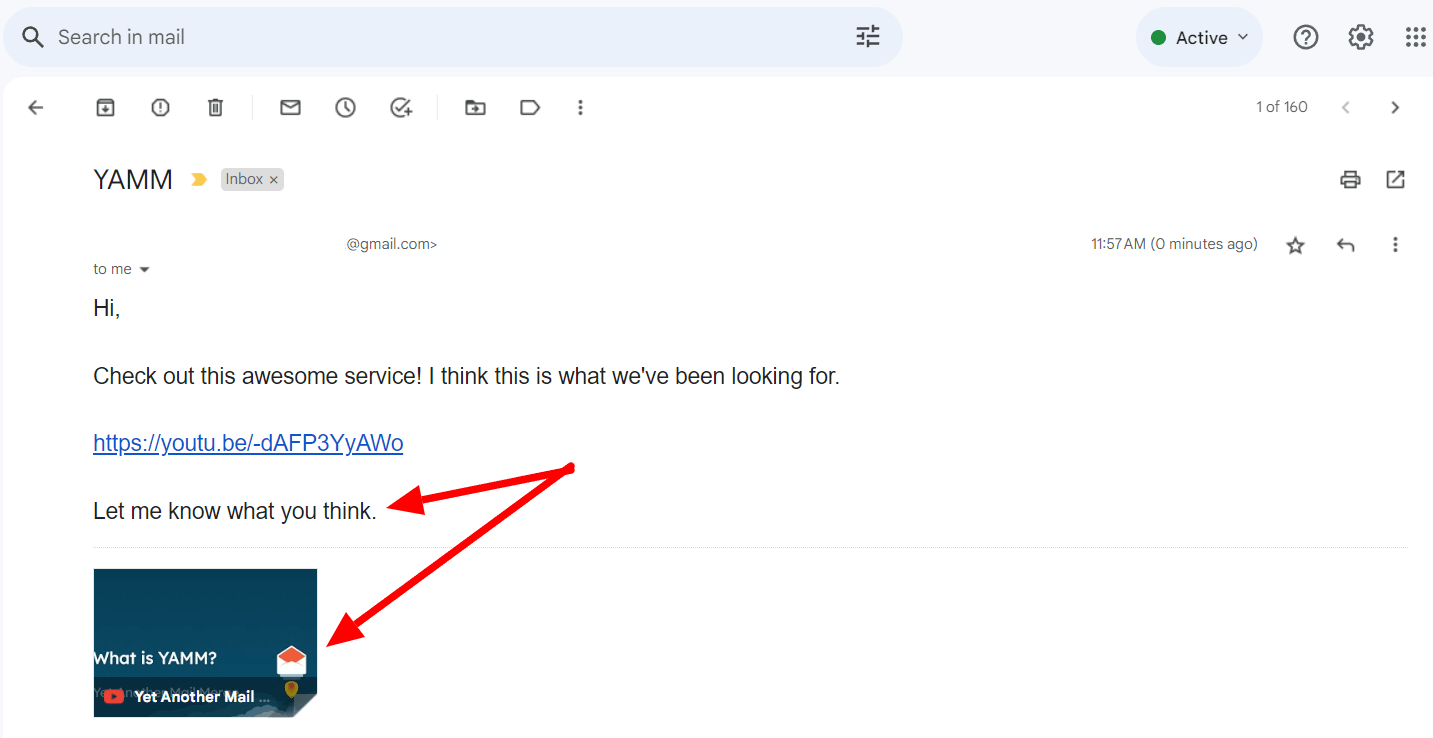
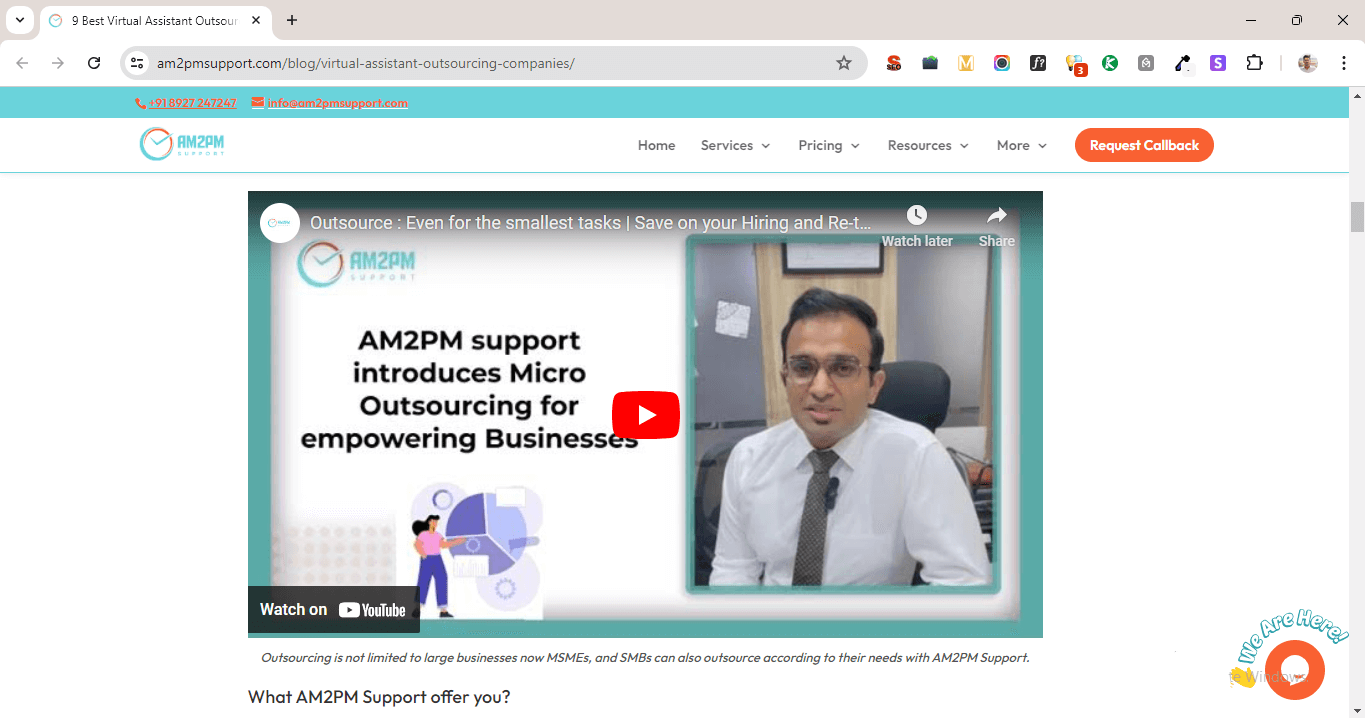
Optimize your YouTube channel page
Your YouTube channel page is the first impression for many viewers. An optimized channel can help your videos rank better. Here’s how to optimize your YouTube channel page for better engagement and visibility:
Write a good channel description
First, a clear and concise channel description helps people understand your channel better. Second, a well-crafted channel page can lead to more subscribers.
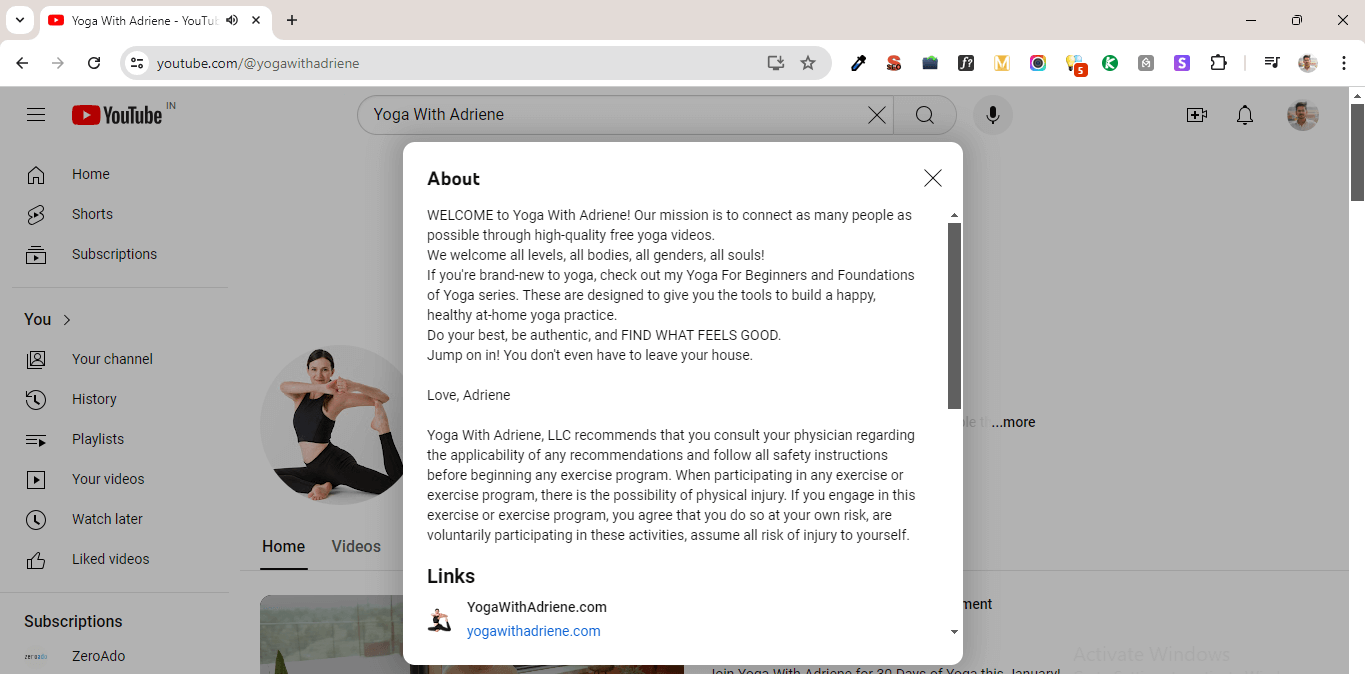
Things to keep in mind while writing the channel description:
- Be clear and concise: Clearly explain what your channel is about and what viewers can expect from your content.
- Include keywords: Use relevant keywords to improve your channel’s searchability and help YouTube understand your content.
- Add links: Include links to your social media profiles, website, and other relevant platforms to connect with your audience outside of YouTube.
Add profile picture and banner
Think of your profile picture as the face of your channel—it’s what people recognize first. Your channel banner is like the entrance to a store, inviting people inside and showing them what’s available.
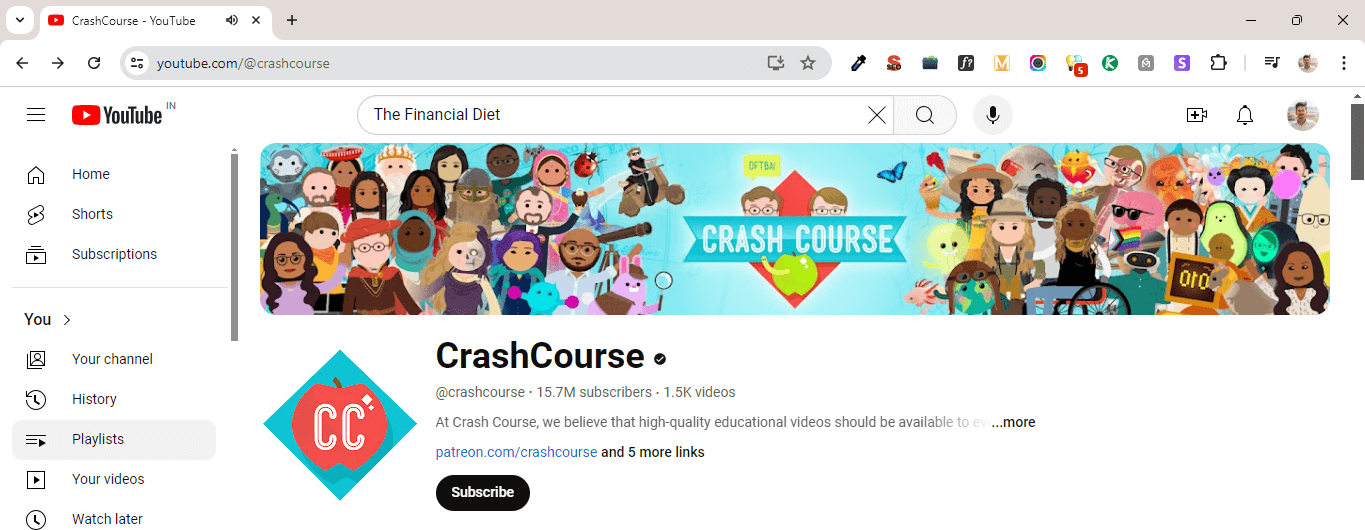
- Profile picture: Choose a high-quality image that represents your brand or yourself. This could be your logo or a professional photo.
- Channel banner: Design a visually appealing banner that reflects your brand’s identity. Ensure it gives an idea of the content you offer and includes your upload schedule or tagline if applicable.
Host live Q&A sessions
Hosting live Q&A sessions can let your user connect with your brand on a personal level. Moreover, it allows your audience to ask questions and get immediate answers, which helps build a stronger connection and makes your video more engaging.
Here’s how to host effective live Q&A sessions:
- Promote in advance: Let people know about your live Q&A session ahead of time on your channel and social media to attract viewers.
- Prepare key topics: Have some main topics or questions ready to keep the session organized and useful.
- Engage with your audience: Answer questions and respond to comments to make the session interactive and lively.
- Use quality tools: Make sure you use reliable streaming software and have a good internet connection for a smooth experience.
Now that you’ve implemented all these YouTube SEO tips, it’s time to see how they’re working for you. For this, go to your YouTube Analytics to track your progress and make data-driven decisions. This will help you understand what your audience likes and where you can make improvements.
Analyze and monitor your YouTube analytics
“Success is the sum of small efforts, repeated day in and day out.” Robert Collier, an American author
In a similar way, the only way to measure the impact of your YouTube SEO efforts is by regularly analyzing your analytics. Just as consistent small efforts lead to success, keeping a close eye on your YouTube metrics—such as views, watch time, and engagement—helps you see what’s working and what needs adjustment.
Thanks to YouTube Studio, as it provides you all the tools that are necessary to monitor your analytics right at your fingertips. YouTube Studio provides detailed insights and easy-to-understand data, allowing you to track your progress and make smart decisions to improve your channel’s reach and impact.
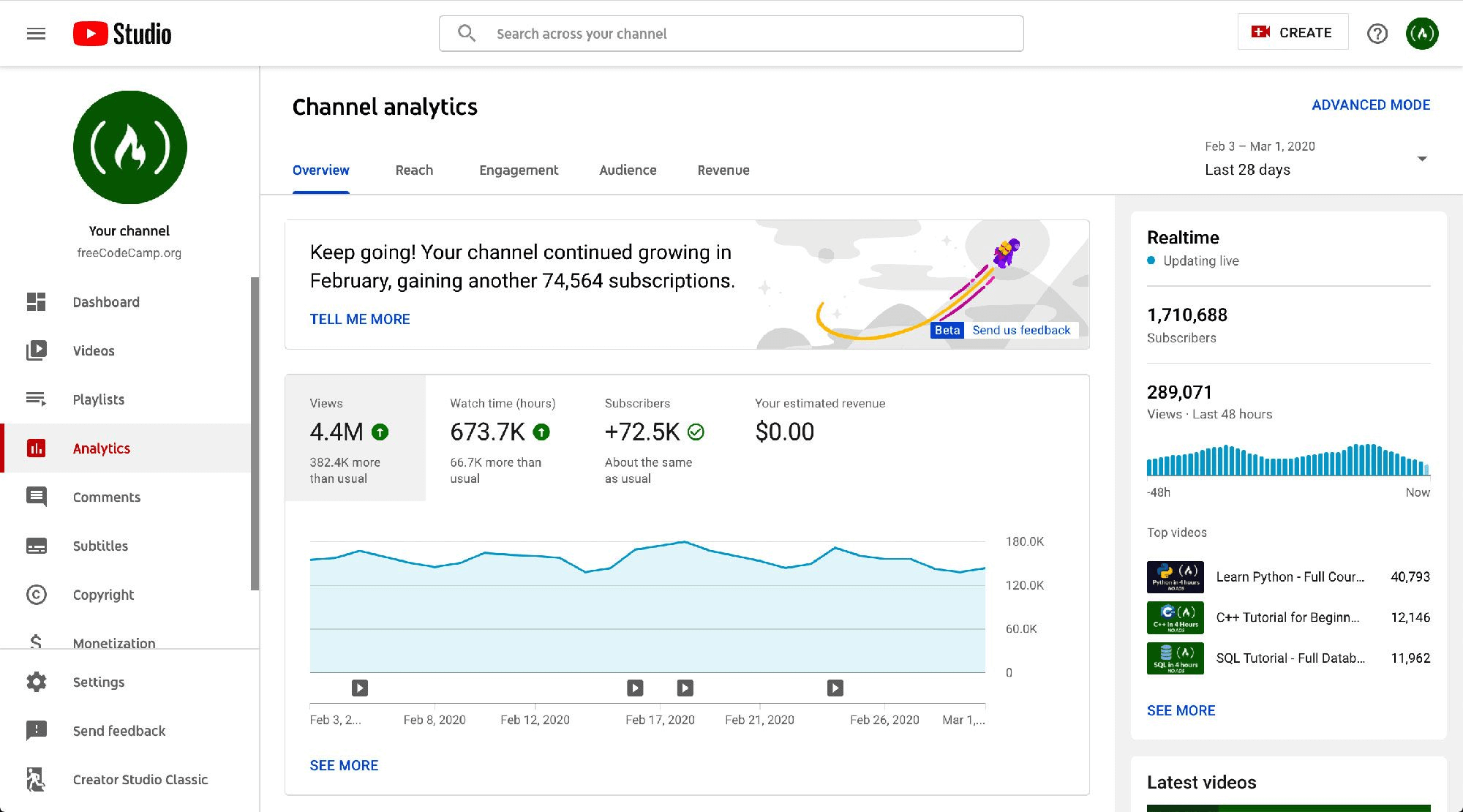
Here are some essential metrics to know:
Views
See how many times people have watched your videos. Each view counts towards your channel’s popularity!
Watch time
The total amount of time viewers have spent watching your videos. The more, the better!
Traffic sources
Find out where your viewers are coming from. Are they finding you through search, social media, or suggested videos?
Impressions CTR
Learn what percentage of people clicked on your video after seeing the thumbnail. A higher rate means your thumbnails are doing a great job!
Card CTR
The click-through rate of your YouTube cards shows how effective they are at driving engagement.
Average view duration
Track how long viewers are staying engaged with your videos. Keeping them interested for longer boosts your channel’s performance.
Unique viewers
See the number of individual viewers watching your videos. This helps you understand your actual reach.
Subscriber growth
Monitor how your subscriber count is changing over time. A steady rise means your content is performing well!
Devices used
Check out which devices your audience prefers such as mobile, desktop, or tablet.
Top videos
Identify your most popular videos. These are the ones you might want to promote further!
Top playlists
Find out which playlists keep your viewers hooked. Playlists can boost your channel’s watch time and engagement.
Demographics
Get insights into the age, gender, and location of your audience. Then customize your content to better match their preferences.
Shares
The number of times your videos have been shared by viewers. The more shares, the wider your content spreads!
Collectively, watching these metrics helps you understand how your content is performing and where you can improve.
Ready to get more traction with better YouTube SEO?
I hope this comprehensive guide helps you understand SEO for YouTube. Now it’s your time to put these tips into action and watch your channel grow. By applying these YouTube SEO strategies, you’ll attract more viewers and turn them into loyal subscribers.
Start implementing these strategies today and see the difference in your engagement and reach. Happy creating!
If you need expert help to boost your YouTube channel, ZeroAdo is here for you. Our team offers YouTube SEO services that improve your channel’s visibility and success.
Contact us today, and let us help you make your content stand out!
Frequently Asked Questions on YouTube SEO
YouTube SEO (Search Engine Optimization) is the practice of optimizing your videos and channels to rank higher in YouTube search results. This involves using relevant keywords, crafting engaging titles and descriptions, and optimizing video tags and thumbnails to attract more viewers and improve your channel’s visibility.
To check your YouTube video SEO, use YouTube Studio. Here, you can review metrics like views, watch time, traffic sources, demographics, and subscriber growth. Look at your video’s performance data to see how well your SEO efforts are working and adjust as needed.
Cracking YouTube SEO involves several strategies. Start by researching and using relevant keywords in your video titles, descriptions, and tags. Craft engaging titles and eye-catching thumbnails to draw viewers in. Optimizing your video descriptions with useful and keyword-rich information can also help boost your video’s ranking.
You can use YouTube SEO for free by taking advantage of the platform’s built-in tools. Research keywords using YouTube’s search suggestions, competitors channels, and related video sections. Optimize your video titles, descriptions, and tags with these keywords. Monitor your video’s performance using YouTube Studio to see what’s working and adjust your strategies accordingly.
To improve SEO on your YouTube channel, regularly upload high-quality content that resonates with your audience. Organize your videos into playlists to encourage longer viewing sessions. Promote your videos across social media and other channels. Analyze your YouTube analytics to understand what strategies are effective and refine your approach based on this data.
